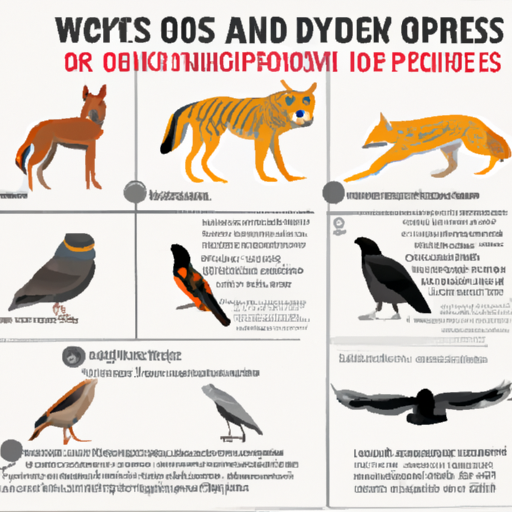“`markdown
What Animal Eats Dogs?
As a caregiver, it’s natural for you to be concerned about your dogs’ safety. You do everything you can to ensure their well-being. However, it’s also important to understand potential threats that exist in the wild.
H2: The Reality of Predation
Unfortunately, dogs can sometimes fall prey to certain wild animals. Predation is a harsh reality of nature. However, it’s crucial to remember that these instances are relatively rare and often occur when dogs wander into wild habitats.
- Coyotes: In North America, coyotes are perhaps the most common predator of dogs. They are adaptable and can survive in both rural and urban environments.
- Wolves: Wolves are larger than coyotes and pose a significant threat to dogs, particularly in areas where their populations are high.
- Big Cats: In certain regions, big cats such as cougars or leopards may pose a threat to dogs.
H2: Understanding The Threat
Each predator has unique behaviors and hunting techniques, which can influence their predatory interactions with dogs.
- Coyotes: Coyotes are opportunistic predators. They are known to lure domestic dogs into traps by engaging them in a game of chase.
- Wolves: Wolves are pack hunters and can take down larger prey. However, they usually avoid human settlements.
- Big Cats: These predators rely on stealth and typically attack from a hidden position.
H2: Protecting Your Dog
There are several strategies you can implement to keep your dog safe.
- Avoid High-Risk Areas: Stay clear of regions known for having high populations of predators.
- Keep Dogs Leashed: When walking your dog, always keep them on a leash.
- Install Fencing: Proper fencing can deter predators from entering your property.
H2: Recognizing The Signs
Knowing the signs of a potential predator can make all the difference.
| Predator | Signs |
|---|---|
| Coyotes | Hearing howling, spotting paw prints |
| Wolves | Seeing tracks, hearing howls |
| Big Cats | Finding scratch marks, spotting large droppings |
H2: FAQ’s
Q: Are smaller dogs more at risk than larger dogs?
A: Size can play a role. Smaller dogs might be seen as easier prey to some predators.
Q: What time of day are dogs most at risk?
A: Night time usually poses more risk as many predators are nocturnal.
Q: Should I stop taking my dog for walks in the woods?
A: Not necessarily. Just ensure you are aware of your surroundings and keep your dog leashed.
Remember, knowledge is power. By understanding the potential threats and knowing how to avoid them, you can ensure a safe and happy life for your dog.
“`



